In Like Flynn (Only): The Rise and Rapid Fall of the Swashbucklerby Steven Goldman
By Yasmina Tawil
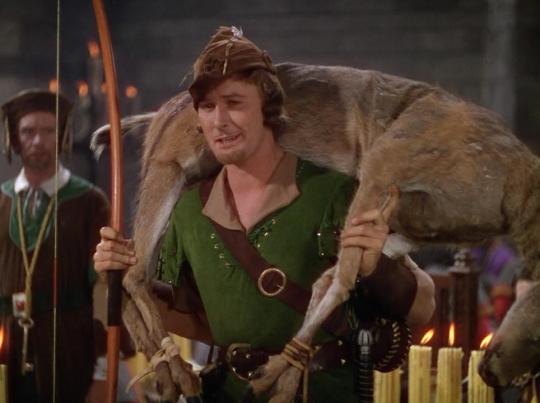
After any viewing of Errol Flynns The Adventures of Robin Hood (1938), one is tempted to say, They dont make em like that anymore. From the perfection of its casting, with Flynn, Olivia de Havilland, Basil Rathbone, Claude Rains, Eugene Pallette, Alan Hale, and Melville Cooper, to its lush score by Erich Wolfgang Korngold, to its unity of tone (despite a midcourse change of directors), to what historian David Thomson called its stained-glass Technicolor, it represents the apotheosis of a genre as well as an exemplar of what the old factory-style studios could deliver when the personnel on staff and the story they were telling found a near-perfect alchemy. However, Robin Hood had only dim antecedents and no successors, so to say, They dont make em like that anymore, isnt quite accurate. But for this one picture, They never made em is closer to the mark.
The swashbuckler genre, that of swords flashing in times ranging from the Dark Ages to the 18th century Caribbean to which Flynns greatest film belongs, began in 1920 when Douglas Fairbanks switched from comedies to action films with The Mark of Zorro. Right in that first picture, Fairbanks and director Fred Niblo established conventions that were repeated in film after film and still recur in cinematic cousins such as the Star Wars movies. The hero is, in the words of Robin Hood co-writer Norman Reilly Raine, a swashbuckling, reckless, rakehell type of character, who is in rebellion against corrupt government authority, but never government authority in generalthe swashbuckling hero is not an anarchist or terrorist, but in many senses a conservative who wants to see power exercised responsibly or by the right people. The hero is an expert with the sword and other weapons, but is also an acrobat, capable of amazing stunts such as riding down a mainsail on the point of a dagger (Fairbanks in his 1926 The Black Pirate). He wins his cause in one on one combat with the villain, usually in a long duel, after which he is often revealed to be a disguised noble, or at the very least forgiven for his trespasses against a government that had lost its way.
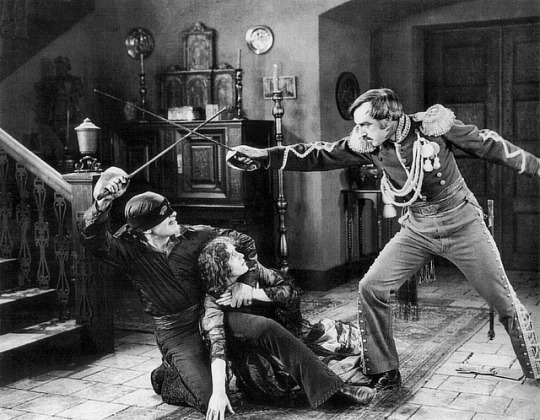
Zorro came out of pulp fiction by way of Baroness Orczys Scarlett Pimpernel, but as Fairbanks and others went on to capitalize on the films success, they found additional sources in the novels of Alexandre Dumas (The Three Musketeers, The Man in the Iron Mask, The Corsican Brothers, The Count of Monte Cristo), Rafael Sabatini (Captain Blood, The Black Swan, Scaramouche), Walter Scott (Ivanhoe, Rob Roy), and the pirate and Robin Hood tales of Howard Pyle. Despite the deep well of material to adapt, the run of swashbucklers largely halted with the simultaneous decline of Fairbankshe was 46 in 1929, the year of The Iron Mask, his last genre film and the first in which, as if to underscore the passage of time, he diedand the arrival of sound.
It wasnt just that Fairbanks was now a bit old and somewhat paunchy for an action hero. Other actors might have picked up cloak and rapier, but nascent sound technology made it impractical for a hero to bounce all over the screen while delivering dialogue. As hilariously and accurately recalled in Singin in the Rain (1952), movies were almost back to the fixed camera and proscenium arch style of the early days, when filmmakers couldnt do much more than film plays as staged. Sound rapidly evolved to allow for more dynamic productions. In the meantime, Hollywood reveled in films set in contemporary times that explored sex, crime, and even the odd glimpse of nudityprominent swords gave way to prominent nipples.
Alas, the new candor only lasted so long due to the strict enforcement of the Production Code that began in 1934. Now the studios had to offer clean thrills, which is to say pure romance without innuendo and visceralbut not prurientexcitement. A small handful of successful 1934 filmsMGMs Treasure Island with Wallace Beery as Long John Silver and a too-young Jackie Cooper as Jim Hawkins, independent producer Edward Smalls The Count of Monte Cristo with Robert Donat as the revenge-minded Edmond Dantes, and the Britain-originating The Scarlet Pimpernel with Leslie Howard as the title charactersuggested that public taste would welcome romantic adventure in place of earthier forms of romance.
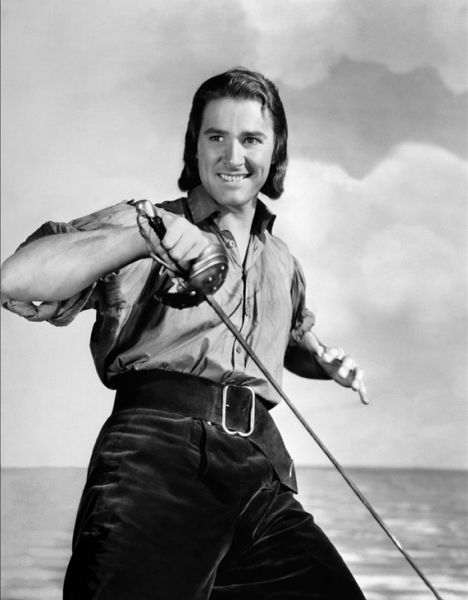
Warner Brothers entry was Captain Blood. Donat initially committed to taking the title role of an Irish doctor who inadvertently finds himself on the wrong side of an attempt to overthrow King James II and is condemned to serve as a slave in the Jamaica colony, but he withdrew at the last minute for reasons that are still unclear but may have been as simple as a health issue and as complicated as his mistress refusing to spend several months in California. The films producers fantasized about Howard, Fredric March, Clark Gable, and Ronald Colman (the last of whom would later excel in the 1937 swashbuckler The Prisoner of Zenda for David Selznick), and tested Brian Aherne and designated Bette Davis costar George Brent before studio head Jack Warner suggested they try Flynn. The 26-year-old Tasmanian was on the payroll, after all; might as well use him.
In retrospect, its amazing how all the elements of a successful Flynn swashbuckler came together at once, but again, for all the negatives inherent in the studio system, one plus was that it functioned as a huge sorting bin for talent that could be deployed as needed. Flynn and the director Michael Curtiz would be together for years. De Havilland, going on 20, was a film neophyte the studio was trying to establish. She and Flynn would eventually make another seven films together (eight if you count the review film Thank Your Lucky Stars) and tantalize the public with one of the screens great unconsummated but nevertheless real romances. Rathbone is on hand as an antagonist with a deadly sword (something he didnt have to fake), a role he would reprise not just in Robin Hood but in pictures as diverse as The Mark of Zorro (1940) opposite Tyrone Power and The Court Jester (1955) in tongue-twisting battle against Danny Kaye.
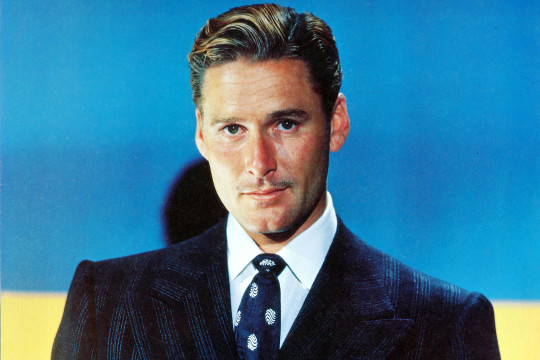
And then there was Flynn himself, vaulted instantly to stardom by the picture. The son of a marine biologist and a distant mother he came to despise, Flynn never completed his formal education due to the peripatetic existence required by his fathers career and his own propensity for getting expelled from whatever school his parents placed him in. By the time he was 18, he had worked as a mail clerk and a stevedore, and he competed as an amateur boxer before leaving Australia for New Guinea to prospect for gold. In addition to his efforts to get rich quick, he worked a series of jobs with the islands various tobacco and copra plantations, got into a series of scrapes he would spend the rest of his life embellishing, and somehow, in 1933, ended up playing Fletcher Christian in an Australian film, In the Wake of the Bounty. This seems to have put the idea of becoming an actor in his mind, and that year he went to Great Britain and got work in a repertory theater company. The next year he was the lead in the film Murder at Monte Carlo, a film financed by Warner Bros. to honor British laws requiring a certain percentage of films exhibited in the country must have originated there. Flynns work was promising enough to intrigue the studio (completing a kind of circle, he was recommended by an acquaintance, Douglas Fairbanks, Jr.) and they brought him to Hollywood.
Critics have long considered Flynn a poor actor. If true, this would certainly be unsurprising given his journey from New Guinea knockabout to leading man took a little over a year, with training that consisted almost entirely of the 22 plays in which he performed for the Northampton Repertory Players in England. It was certainly true at times in Captain Blood. Flynn was nervous and his readings were often stiff. As he became more comfortable, Curtiz was ordered to reshoot certain scenes so that Flynn could give a better performance. Yet even in the finished film there are many lines that die in his mouth. He never was good at limning deeper emotions. Hes far more polished in his second film, The Charge of the Light Brigade (1936, Curtiz), and yet when hes asked to react to a brutal massacre of soldiers and civilians by tribesmen on the Indian frontier, he tosses off the line, Those poor little kids horrible, with all the anguish of a man ordering a ham sandwich. Its something hes saying, not feeling.
And yet, he was also able to convey a brio that few other actors, then or now, could equal. It is often remarked that Flynn could carry off a period costume in a way that contemporaries such as Clark Gable and Cary Grant could not. (Each had a famous flop in this regard, the former with Parnell, 1937, directed by John M. Stahl, and the latter with The Howards of Virginia, 1940, Frank Lloyd). Midway through Captain Blood, Peter Blood leads his fellow slaves to escape, capture a ship, and embark on a career of piracy with himself as captain. As they ready the ship to depart Jamaica, Flynn shouts, Up that rigging, you monkeys! Aloft! Theres no chains to hold you now! Break out those sails and watch them fill with the wind thats carrying us all to freedom!
Its a ridiculous speechno one really talks like that, least of all in 17th century Jamaica. Yet, while Flynn couldnt mourn murdered children on screen with any real passion, he could make lines like that believable. It doesnt hurt that he was beautiful. A joyous Flynn was simply radiant, his elation in liberation contagious. At the other end of the emotional spectrum, he could also bring a convincingly grim intensity to a duel to the death, which he animated not via the complexity of the swordplay (as a swordsman, Flynn was able to fake an excellence that far exceeded his technical ability) but through personality and character. Compare his climatic duel with Rathbone in Robin Hood to the endless and mostly mute balletics of Ewan McGregor and Hayden Christensen that close Star Wars: Episode III Revenge of the Sith (2005, George Lucas, God help us). There is an exchange between Flynns Robin Hood and Rathbones Guy at the outset of what will clearly be a long and fatal fight:
Robin (smiling): Did I upset your plans?
Sir Guy: Youve come to Nottingham once too often!
Robin: When this is over, my friend, therell be no need for me to come again!
Or moments later, when Robin is down and Guy has the advantage:
Sir Guy: You know any prayers, my friend?
Robin: Ill say one for you!
And with that, he escapes once more. It would be a pleasure to report that Warner Bros. recognized the alchemy they created and made a dozen more films in this vein, but it didnt happen that way. Some of that was due to the studios grind-em-out ethos, a great deal to Flynn himself, and some to the way World War II disrupted lives in ways both monumental and trivial. Peak Flynn was short-lived, and during that time he made only one more pure swashbuckler, The Sea Hawk in 1940 (Curtiz), with an honorable mention to 1937s The Prince and the Pauper, in which he acts in support of (and steals the picture from) the juvenile twins Billy and Bobby Mauch. It would be eight years before The Sea Hawk received a follow-up, The Adventures of Don Juan, a very different kind of swashbuckler with a very different Flynn, and also his last of inarguable merit.
Period pictures took time to put together, something antithetical to the way Warner Bros. viewed actors and films. This was the studio of gangster pictures and backstage musicals, both of which could be knocked out quickly. The careers of James Cagney and Joan Blondell, who appeared in both kinds of films and had arrived at Warners together ahead of Flynn, are instructive. They began in 1930 with Sinners Holiday and rapidly ascended to stardom. By the time Flynn arrived five years later, Cagney had appeared in 23 films and Blondell in 36. These actors were shuttling from soundstage to soundstage, sometimes starting their next picture before their current one had quite been finished. Similarly, Bette Davis came to Warners with The Man Who Played God in 1932. Though she fought relentlessly against being tossed into the studios meat-grinder (For the first time in my life I dont care whether I ever make another picture or not, she wrote to Jack Warner in 1939, I am that overworked), she nevertheless made another 34 pictures by the end of the decade. Jack Warner was heard to say, I dont want it good, I want it Tuesday, and the studio did its best to work on that pace.
Flynn wasnt worked quite as hard as Blondell, who appeared in 10 films in 1932 alone and was once made to shoot with a burst appendix (within five years Flynn had starred in 17 films), but the studio was in no way willing to keep him idle long enough for the building of castles and Spanish galleons sets to be justified by the right script. In the interim they tried romantic dramas, western after western beginning with Dodge City in 1939 (Curtiz), and, as current events soon required, war pictures. Very occasionally, because Flynn requested it, he got to do a light comedy like Fours a Crowd (1938, Curtiz), in which he romances de Havilland and Rosalind Russell. A mlange of what were already screwball tropes, Crowd isnt a very good picture, but Flynn is at ease in it and there is little reason to doubt that he could have carried off more comedic parts.
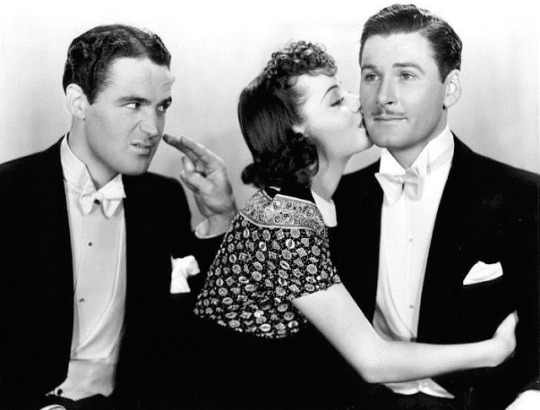
Yet it came to be accepted with a kind of glib certainty that the public would only watch Flynn as an adventurous hero, and a sword-wielding, tights-wearing hero at that. Even he came to believe it. Yet if drama was beyond himas the New York Times commented in its review of his 1938 drama with Davis, The Sisters, There are moments, perhaps, when [the film] may grow just a wee bit burdensome, especially when Flynn is trying to look as if he believed in his despairit is also true that he was contracted to the wrong studio if he was going to get a chance at the Cary Grant-like parts he craved.
In the roughly 30 years between the introduction of sound and the end of the classic studio era, Warner Brothers made many comedies but relatively few are memorable. Think of the screwball film, the sped-up version of farce that was one of 1930s Hollywoods lasting contributions to the culture. None of the classics of the genre originated on the Warners lot, as an attenuated greatest hits list confirms:
It Happened One Night (Frank Capra, 1934, Columbia)
Twentieth Century (Howard Hawks, 1934, Columbia)
My Man Godfrey (Gregory La Cava, 1936, Universal)
The Awful Truth (Leo McCarey, 1937, Columbia)
Nothing Sacred (William Wellman, 1937, Selznick International)
Bringing Up Baby (Hawks, 1938, RKO)
Holiday (George Cukor, 1938, Columbia)
You Cant Take It With You (Capra, 1938, Columbia)
Midnight (Mitchell Leisen, 1939, Paramount)
His Girl Friday (Hawks, 1940, Columbia)
The Philadelphia Story (Cukor, 1940, MGM)
The Lady Eve (Preston Sturges, 1941, Paramount)
Ball of Fire (Hawks, 1941, Samuel Goldwyn Co.)
The American Film Institute list of Americas 100 Funniest Movies, compiled in 2000, contains 48 films made during the studio era (through 1960, broadly speaking). Warners has exactly two, Frank Capras Arsenic and Old Lace (1944) and Auntie Mame (1958), both of which were made after Flynns decline. At Warners, Bugs Bunny made the quality comedies.
This is no indictment of Warners; one can make a similar list of westerns that excludes MGM unless one is willing to go out on a limb for late-career Wallace Beery programmers. Each studio had house styles that led them to favor certain genres at the expense of others. At the risk of over-generalizing, Warner Brothers did certain things well: When Darryl Zanuck was production chief, fast-talking gangster pictures and backstage musicals. With Hal B. Wallis running the studio, it specialized in Paul Muni biopics, giving Humphrey Bogart opportunities to be brave or cynical or cynically brave, and Bette Davis the opportunity to be defiant or tragic or tragically defiant. What Wallis and his cohort couldnt quite figure out how to do is to use Flynn in a sensible way if they couldnt push out a Robin Hood on a regular basis. This was complicated by world conditionshigh-budget costumers werent viable after World War II closed the European marketand Flynns rapidly intensifying personal dissipation. It is impossible to know how many roles doubts about his professionalism, his simple ability to come to work and stay sober, or to come to work at all for that matter, cost him. This is particularly applicable to costume pictures, always expensive affairs that needed to stay on schedule to make money.
Other studios tried their hands at swashbucklers, though the war had the same chilling effect on their period pictures that it did on Warners. Fox plugged Tyrone Power into the genre with success beginning with 1940s The Mark of Zorro and another Sabatini adaptation, The Black Swan (1942). Both are good movies, with the detailed sets and brilliant technicolor of the latter especially memorable. Neither, though, breaks new ground or, without grading on a curve for their being genre pictures, rises above being just decently entertaining. The former was directed by Rouben Mamoulian, remembered today for staging the original production of Rodgers and Hammersteins Oklahoma!, innovative camera movement that defied the static nature of early talkies, and the Isnt It Romantic sequence in the 1932 Maurice Chevalier musical Love Me Tonight, in which, through the use of montage, the Rodgers and Hart song spreads infectiously from the protagonist s tailor shop to people on the street, armies in the field, and eventually makes it way to Jeanette MacDonald, the object of his song.

Unfortunately, not much of Mamoulians imagination is in evidence in Zorro, which suffers from problems of pacing, confusion as to whether the storys key antagonist is Basil Rathbones arrogant Captain Pasquale or his master, the corrupt alcalde played by J. Edward Bromberg, a weak love interest in Linda Darnell, and, in common with many later super-hero films, a fascination with Powers performance as the foppish secret identity Don Diego Vega, that displaces the title character. The Black Swan (Henry King) is a better film that benefits from vivid color and strong supporting turns by Maureen OHara, George Sanders (buried in so much fake hair as to be almost unrecognizable), and Laird Cregar as Captain Henry Morgan. Cregar more or less steals the picture, but the larger problem to our modern eyes is that in costume and makeup Powers Jamie Waring is a non-concussed Jack Sparrow whose approach to wooing OHara would today be classified as sexual assault.
The swashbuckler didnt have time to establish itself at every studio before the war made the expense of the pictures impractical. Colman made the aforementioned Zenda with Fairbanks son Douglas Fairbanks, Jr. excelling as the villainous Rupert of Hentzau. It was a role that pointed to a future in which he finally followed in his fathers footstepsjust before Pearl Harbor, Edward Small would showcase him in one of what would now become a long series of Dumas adaptations, The Corsican Brothers (Gregory Ratoff). Colman was also an excellent Francois Villon, rabble-rousing French poet matching wits with King Louis IX, played by Rathbone in what may have been the performance of his career, in If I Were King (1938, Frank Lloyd). Fredric March suited up as Jean Lafitte, the pirate who teamed up with Andrew Jackson to win the Battle of New Orleans, in Cecil B. Demilles The Buccaneer (1938) for Paramount. The South Africa-born Louis Hayward picked up the rapier for Small in The Man in the Iron Mask (1939, James Whale) and an exploitation of Smalls earlier success with Donat, The Son of Monte Cristo (1940, Rowland V. Lee).
The war came and Power, Fairbanks, Jr., and Hayward went into military. Flynn was declared 4F. He suffered from tuberculosis, and as a chain smoker (seemingly nine Flynn pictures out of 10 depict him with a cigarette in his hand), he was doubling down on a disease that was turning his lungs into scar tissue. And so Flynn would be in pictures for the duration (depending on who is doing the writing, his inability to serve either distressed or relieved him), but he would do no swashbuckling. In the immediate pre-war years and into the war itself, he was still making fine films, but they were in other genres: Santa Fe Trail as an ahistorical Jeb Stuart in combat against Raymond Masseys maniacal John Brown (and rubbing prudish costar Ronald Reagan the wrong way both on and off camera); with de Havilland as George and Libby Custer in They Died With Their Boots On; excellent as the boxer James J. Corbett in Gentleman Jim (only 33 years old, he suffered a mild heart attack on set); winning in a musical number (and none too pleased to be doing it gratis) in the all-hands-on-deck Warners revue Thank Your Lucky Stars; almost unrelievedly grim warring against the Japanese in Objective Burma!
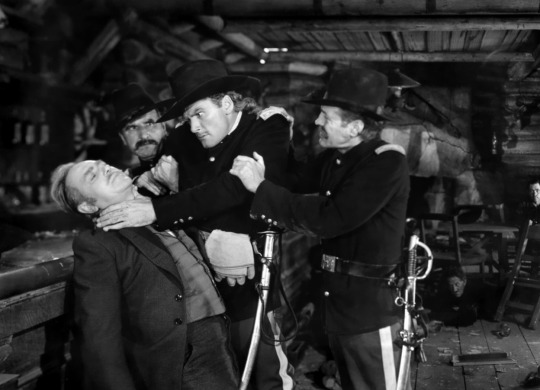
When the stars returned, so too did the adventure romances, but the old panache, which had been limited to so few of the original films, was difficult to recapture. The new vogue for costumers kicked in about 1948 and lasted into the early 1950s. When the swashbucklers were bad or made in too slapdash a style (see, for example, the Cornel Wilde vehicles The Bandit of Sherwood Forest and At Swords Point, made by Columbia and RKO, respectivelythe latter notable for giving Maureen OHara a chance to fight alongside the boys) they suffered from cheap sets, bad castle mattes and obvious sailing ship miniatures, a sameness of casting (whether, as with the ubiquitous Alan Hale, the actor always added something, or, as in the case of frequent villain Robert Douglas, were just there with a tired sneer), and American actors trying very hard to come off as a Frenchman, Briton, or Spaniard from the 1600s instead of a contemporary from Kalamazoo. Even if Tony Curtis (nee Bernard Schwartz) of the Bronx never actually said, Yondah lies da castle of my faddah, he and dozens of other actors came near enough to it with regularity.
Sometimes this lack of attention to cultural and linguistic matters expresses a coded racism. Never mind trying to accept New Jerseys Sterling Hayden as a French pirate (The Golden Hawk, 1952, directed by Sidney Salkow) or Nebraskan Robert Taylors uninflected robot speech as typical of a Saxon knight (Ivanhoe, 1952, Richard Thorpe); try not to notice how in Powers Zorro, all the white Europeans sound like contemporary Americans while all the Mexicans sound like Speedy Gonzales-style stereotypes.
Tone was a frequent problem. MGM had sat out the first round of swashbucklers, but in 1948 they gave Gene Kelly a chance to play DArtagnan in a color remake of The Three Musketeers (George Sidney, who more typically worked the studios big musicals). The film is epically miscast. At 36, Kelly was old for DArtagnan, but he had the panache and athletic ability to carry off the part. Unfortunately, his portrayal is far more broad and winking than any he ever allowed himself in a musicalhis Jerry Mulligan in An American in Paris is downright dour in comparison. The films color scheme is as garish as the 1966 Batman television series, and the MGM stock company also lets the picture down, supplying Lana Turner and June Allyson for the female leads; both look lost, like theyre wondering when all this pageantry will be revealed to be the school play in a sequel to Good News.
Similarly, Burt Lancasters two forays into the genre, The Flame and the Arrow (1950, Jacques Tourneur) and The Crimson Pirate (1952, Robert Siodmak), while often entertaining, seem unsure if theyre adventure films or parodies. The former, set in 12th century northern Italy, has Lancaster as an archer unwillingly caught up in an insurgency against the German occupation of Lombardy, plays it fairly straight, whereas Pirate goes for outright camp. Both films continually pause so that Lancaster and his acrobat pal Nick Cravat can do circus stunts.
Perhaps in the postwar world none of these films could take themselves seriously and prosper. Swords, hose, and chivalry had become much further removed from the present day than they had been in 1935. The planet had awoken to the grim realities of holocaustthat instigated by the Nazis in the immediate past as well as a hypothetical sequel augured by the creation and use of atomic weapons. The political concerns of a long-dead aristocracy no longer had plausible resonance. In both Captain Blood and Robin Hood, Flynns title characters are rebels, but neither primitive republicans nor anarchists. Rather, theyre in revolt against kings they perceive as illegitimate or abusive. In both cases, once proper authority is restored, they go back to being supporters of the established order.
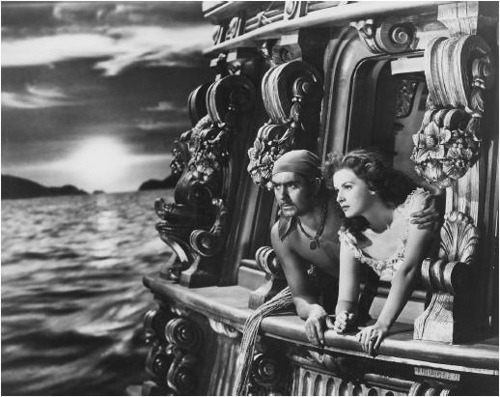
The films make certain the audience is clear that the heroes are no radicals. In The Black Swan, Power has this exchange with famous pirate Henry Morgan, who, having reformed, is now the governor of Jamaica and struggling to cope with a recalcitrant legislature:
MORGAN: I wish my nature hadnt changed. Id have made that whole assembly walk the plank.
WARING: You cant go wrong drowning politicians, Henry.
MORGAN: No, no. Were just day-dreaming, Henry.
Zorro too wants to overthrow a corrupt governor and replace him with his own father, a more enlightened despot, rather than rule by the people. The Three Musketeers act to preserve the monarchical rule of the House of Bourbon, not exactly the swiftest group ever to wear a crown, and Flynns Captain Thorpe of The Sea Hawk is a privateer, a legal pirate, who reports directly to Queen Elizabeth.
The studios returned to the swashbuckling genre beginning in the late 1940s not because romantic escapism retained its old cache, but because postwar politics, including the HUAC hearings on Communist influence in Hollywood, made anything approaching a serious look at modern culture and politics impossible. To cite just one example, RKOs Crossfire (1947, Edward Dmytryk) got studio head Dore Schary dragged to Washington for the subversive suggestion that the United States harbored at least one anti-Semite. Dmytryk was blacklisted. In addition, spectacle (even if only toy boats in a bathtub) was one thing they could do that television could not. Columbia in particular pumped these titles out with regularity and without distinction.

It took Flynns return to the genre to give it a last shot of life, though given his defects, it would only be a one-time revival. After The Sea Hawk, Warners had spent a good deal of time trying to fit Flynn for The Adventures of Don Juan, a version of which they had made as a part-sound film with Flynns friend John Barrymore in 1926. Following in the Great Profiles footsteps had appeal for Flynn, but the story of an indefatigable womanizer provoked bad associations and he refused to do the picture. In 1943 he had been tried simultaneously for two cases of statutory rape. Though acquitted, Flynn was robbed of his trademark joie de vivre. As he said in his posthumously-released autobiography, My Wicked, Wicked Ways, the acquittal was far from vindication:
Those first thoughts of death, destruction, and suicide began to occur within mewhich would not early or easily or perhaps ever vanish Much of the will to live had gone I knew I had lost. I know that I could never escape this brand that was now upon me: That I would always be associated in the public mind with an internationally followed rape case.
The phrase, In like Flynn rapidly became a metaphor for scoring with a woman. At one point, Flynn joked that his book should be titled, In Like Me, but he wasnt laughing.
This made Warners take on Don Juan problematic for the actor. As scripted, the film would be a winking take on Flynn the serial seducer. He didnt find this concept at all amusing, but by the late 40s he had apparently gotten enough distance from the trial and compiled enough consecutive bad reviews in other genres to frighten him into a retreat. He would be surrounded by a strong cast, including his friend and frequent costar Alan Hale, Viveca Lindfors as Queen Margaret, and (alas) the inevitable Robert Douglas. Flynn requested house director Vincent Sherman for the film because his own lack of professionalism had destroyed his relationships with his previous designated directors Curtiz and Raoul Walsh, and he was looking for someone pliable.
The intervening years had made Flynn more of a fit for the part of an aging rou. Though not quite 40 years old, alcohol, amphetamines, morphine, cigarettes, tuberculosis, and heart disease had made him look 50, if not older in some lights. Accepting this, he played the part with appropriate weariness. At the outset of the picture, when he banters with a recalcitrant lover, the lines are delivered not with insouciance, but with fatigue:
DON JUAN: I have loved you since the beginning of time.
CATHERINE: But you only met me yesterday.
DON JUAN: That was when time began.
Flynn shrugs at the last line, as if hes acting out a play Don Juan has performed too many times for a payoff that may no longer be worth the effort.
Don Juan is an enjoyable film that grows serious in its second and third acts as the title character becomes aware of a plot to overthrow the Spanish monarchy. It also takes time to chide Don Juan/Flynn on his profligate ways, putting these words in the mouth of Lindfors Queen Margaret:
We have received letters concerning you from our ambassadors all over Europe. It is with slight regard, and very little favor that your queen receives you on your return to Spain. You come back to us notorious, of ill repute, disgraced in your own country and abroad. You are no credit to this crown or to your flag You have nothing to say?
Flynns was allowed only a chastened response: There seems very little left to say, your majesty.
The film climaxes in a duel between Flynn and Douglas on a grand staircase. Its well executed despite the need for doubling Flynn. He was in poor shape; Sherman reversed one key confrontation between Flynn and Douglas in which it had been intended for Douglas to sit and Flynn to stand. In anticipation of the infamous final scene in Flynns Montana (Ray Enright, 1950) when Flynn, too winded or disinterested to do much more than show up, refused to stand for his picture-ending clinch with Alexis Smith (he lies on the ground and she cradles him in her arms), the hero spent the scene in a high-backed chair.
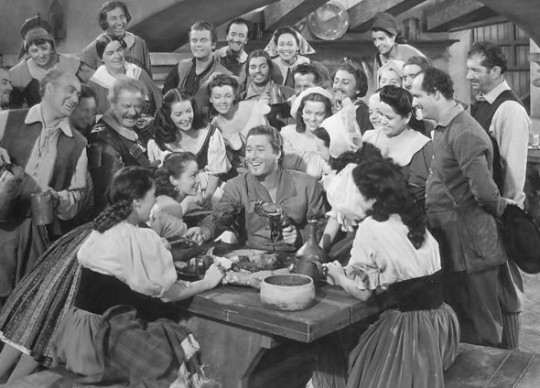
Nevertheless, Don Juan gets Flynns allure in spite of its chiding, despite Jack Warner seething at Flynn-inspired delays that caused cost overruns, despite the director discovering that the healthful, invigorating oranges he thought Flynn was eating in his dressing room were impregnated with vodka. As the picture ends, Queen Margaret asks Don Juan where he will go next. He shrugs. Who knows? Into oblivion, I suppose, where most legends go.
She is allowed to disagree. No. There can be no oblivion for you. Where you go, life follows.
This gets at something essential about the swashbuckling genre, something Douglas Fairbanks understood nearly 100 years ago and that Flynn also perceived, perhaps instinctively: The appeal is not in the setting, its in the excitement derived from watching a free spirit defy the dreary established order with nothing more than a sword or a bow and arrow. Not only can one man make a difference in these stories, he can find the whole thing to be highly amusing.
Thats why Flynns lines about the wind carrying him and his men to freedom resonate despite their ridiculousness, and why Robin Hood, alighting on a tree and shouting Welcome to Sherwood Forest! to a fussy Rathbone and de Havilland is such an elevating moment. Its also why Ridley Scotts darker take on the same material with Russell Crowe as Robin (2010) doesnt: A gritty Robin, scarred by the horrors of the crusades, fighting his way up from poverty is probably a more plausible 12th century story (to the extent anything about Robin Hood is plausible), but swashbucklers arent about the brutality of history. They avoid it. They only see the upside, which is the high adventure inherent in cutting loose and standing up for yourself. Thus the film fails despite a quality director, leading man, leading actress (Cate Blanchett), screenwriter, and high production values.
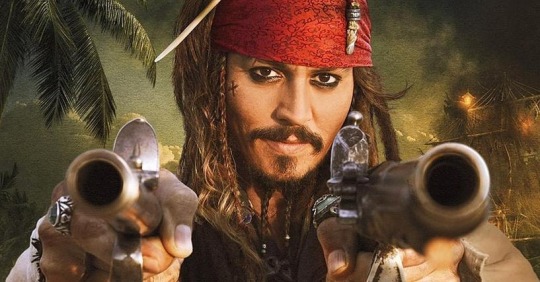
Essentially, no one needs to see the Zack Snyderized version of the swashbuckler, with all of the lighter elements inherent in these tales leeched out. Of course Robin Hood was grubbing in the mud like the peasants in Monty Python and the Holy Grail. Of course pirates were thieves and murderers who slaked their lusts between heterosexual rapes with some forcible sodomy belowdecks. We know that. No one has to be told. No one needs to see Robin Hood v William Wallace: Dawn of Feudalism.
Thats why, in the end, for the swashbuckler maybe there was only Errol Flynn, and even then it was Flynn only for a short period of time (though he would return to swashbuckling after Don Juan, it was out of career-saving necessity rather than in pursuit of good material). Thats why the genre didnt work as well, to the extent it worked at all, with actors from Robert Taylor to Rock Hudson to Kevin Costner, Stewart Granger to Michael York, Robert Shaw to Walter Matthau (seriously, for Roman Polanski no less), Liam Neeson to Johnny Depp (whose Pirates of the Caribbean films are about neither pirates nor the Caribbean), and onward. Either the uplift is absent or, as with Lancaster, its all giddiness with nothing at stake.
Thats not to say that no good films have been made in the genre since Flynns days. Grangers Scaramouche (1952, George Sidney), with its endless climactic swordfight, is worth seeing, as is Richard Lesters often campy take on The Three Musketeers (1973) with York as DArtagnan. Walt Disney, his profits trapped in Great Britain, made a series of swashbucklers with Richard Todd in the lead roles beginning in 1952 which dont deserve to be lost among all the animated films, including the studios anthropomorphic animal version of Robin Hood (1973, Wolfgang Reitherman) which is occasionally entertaining but isnt terribly interested in its own main character. The 2002 remake of The Count of Monte Cristo (Kevin Reynolds) starring Jim Caviezel is solid. The list could go on, especially if broadened to include fantasy films that have elements of swashbuckling, like The Princess Bride and Stardust.
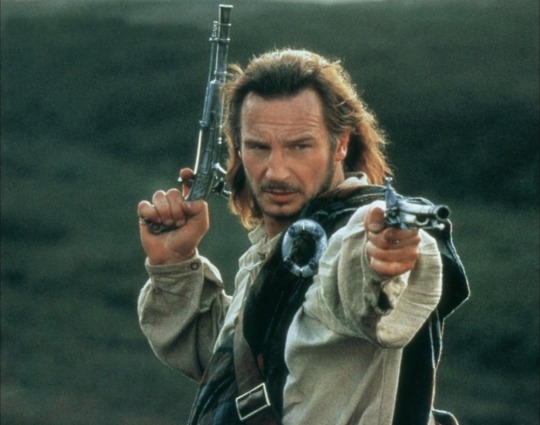
But return for a moment to Neeson and his version of Rob Roy (1995, Michael Caton-Jones). It ranks far to the right on the all joy and no consequences/all consequences and no joy scale. Neeson, not yet in his one-dimensional Taken mode, had the charisma to make the film the adventures of the highland rogue as the subtitle of the 1953 Disney version had it. That choice, though, would have been irrelevant given the sadism of Tim Roths villain, Archie Cunningham. In a low point for historic fantasy films, Cunningham tries to goad Rob by throwing his wife, Mary (Jessica Lange), over a table and raping her, after which Mary wades into a lake and desperately tries to wash his semen out of her vagina. Again, this is probably realism, but realism to the point of being exploitation, and it drags the viewer out of the realm of entertainment.
At the conclusion of Don Juan, Flynn and Alan Hale ride off in pursuit of new adventure, Flynn swearing that he is done conducting wild affairs with women. On the road, they encounter a beautiful female, and just like that Flynns promise is forgotten. When Hale calls him on this, Flynn responds, My dear friend, theres a little bit of Don Juan in every man. Since I am Don Juan, there must be more of it in me. For the sake of the genre, its too bad there hasnt been more of Flynn in subsequent actors, writers, and directors.

